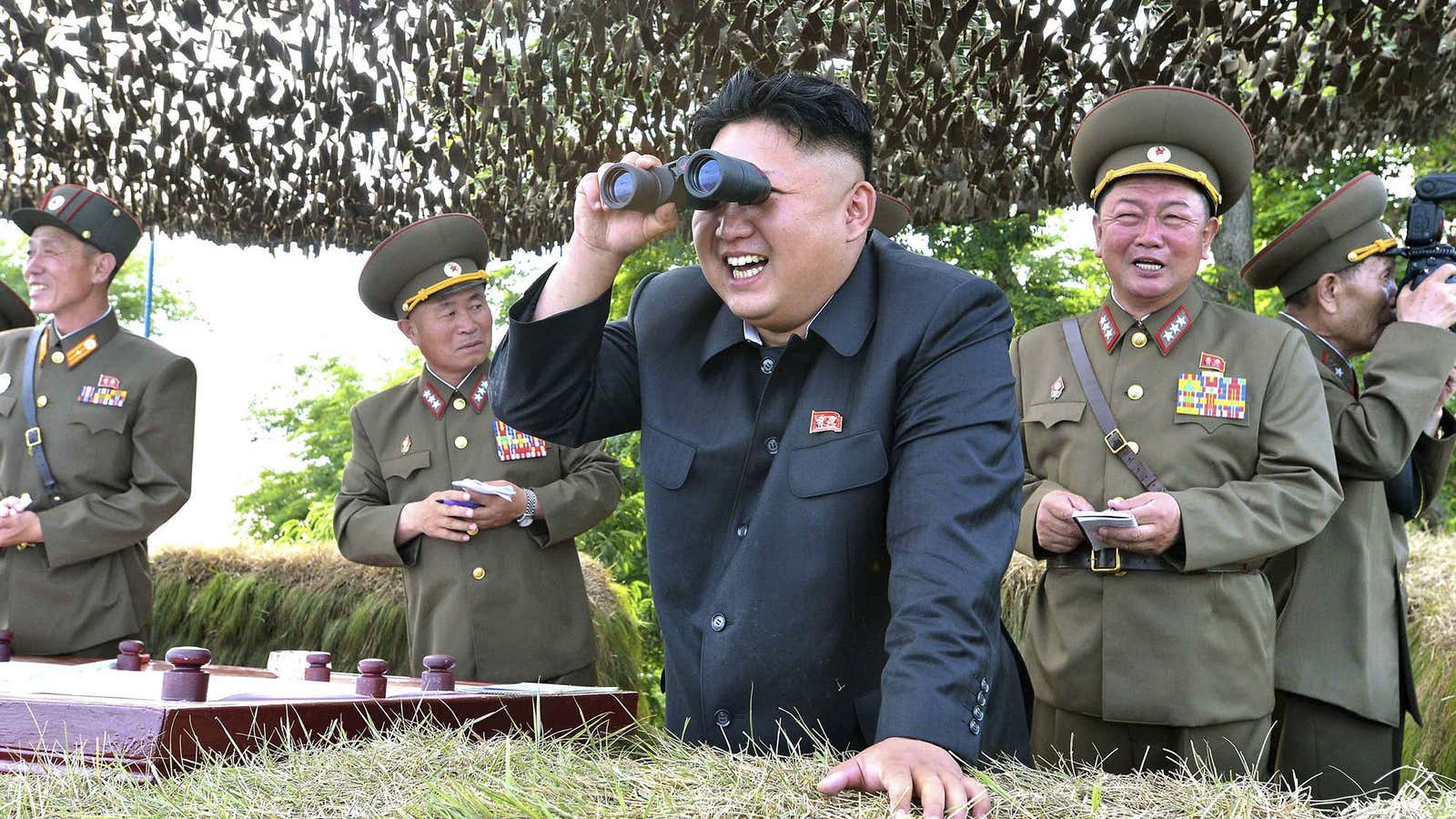North Korea claims it has successfully tested a hydrogen bomb, but the rest of the world is treating the news with caution. Evidence gathered by experts so far seems to refute North Korea’s claim.
“While we cannot confirm these claims at this time, we condemn any violation of United Nations Security Council Resolutions and again call on North Korea to abide by its international obligations and commitments,” the US National Security Council spokesman Ned Price said.
How do you detect a “secret” nuclear bomb test?
Not all nuclear powers signed and ratified the 1996 Comprehensive Nuclear Test-Ban Treaty, but that agreement created an international organization to detect any secret nuclear bomb test in the world: The Preparatory Commission for the Comprehensive Nuclear-Test-Ban Treaty Organization (CTBTO). It has 337 monitoring stations across the world.

A nuclear bomb test can be conducted in three places: open air, under water, and underground. When it explodes, a nuclear bomb releases a lot of energy. This energy moves in the forms of waves that travel at the speed of sound through whatever medium surrounds the bomb. If you have several wave detectors, you can use them to triangulate the exact location where the bomb test was conducted.
In the open air, there are ”infrasound detectors.” These detect low frequency sound waves generated by natural events, such as storms or volcanoes, or artificial events such as a rocket launch or a nuclear explosion. The last has such intensity that any open-air nuclear bomb test is hard to miss.
In the water, there are “hydroacoustic detectors.” These detectors are like underwater microphones, and, like open-air explosions, nuclear explosions in the water are really loud. So it’s also hard to miss a nuclear bomb test underwater.
In the ground, there are seismometers. These are the same detectors used to measure earthquakes. However, in this case, the magnitude of natural events can sometimes be greater than the magnitude of a nuclear bomb, which makes underground nuclear bomb tests the hardest to detect. It’s perhaps why all the test conducted since 1996—at the cost of enraging the international community that banned these tests—have been conducted underground.
Finally, to be sure that an explosion is nuclear in nature, scientists must confirm that there has been “radioactive fallout.” Nuclear explosions inevitably release some amount of radioactive gases into the atmosphere. Radionuclide detectors around the world can sniff these out for conclusive proof of nuclear testing.
So what happened in North Korea?
North Korea’s Jan. 6 test appears to have been conducted underground. The US Geological Survey recorded an earthquake of magnitude 5.1 at a depth of 0.0 km in the north-eastern region of the country. That depth of seismic activity does suggest that it was triggered by a bomb—normal geological activity usually happens much deeper.
But Pyongyang said it detonated a hydrogen bomb, which usually produces a much bigger explosion than an atomic bomb. The smallest hydrogen bomb ever known to have been tested had a yield of least about 30 kilotons (kT is a unit of measuring the energy of explosion as an equivalent in thousands of tons of TNT). For reference, the atomic bomb detonated over Nagasaki in 1945 that killed about 40,000 people instantly, was 21 kT.
The magnitude of the earthquake indicates that today’s supposed hydrogen bomb may not be bigger than 10 kT, according to a preliminary analysis by James Acton, a researcher at the Carnegie Endowment for International Peace. In fact, it looks to be on about the same scale as the seismic activity caused by North Korea’s 2013 nuclear test, which was claimed to be an atomic bomb.
As Quartz explained earlier, even a miniature hydrogen bomb is unlikely to be of a similar magnitude to an atomic bomb. So if the calculations are correct, today’s nuclear bomb test was simply too small to be a hydrogen bomb.
Bruce Bennett, an analyst with the Rand Corporation, expressed skepticism to the BBC: “The bang they should have gotten would have been 10 times greater than what they’re claiming. So Kim Jong-un is either lying, saying they did a hydrogen test when they didn’t, they just used a little bit more efficient fission weapon—or the hydrogen part of the test really didn’t work very well or the fission part didn’t work very well.”
There is a chance that the test North Korea conducted today was at a higher depth than the one conducted in 2013. In that case, the calculations will vary and might increase the yield of today’s test. Still, it’s unlikely that the yield would be many times more than 10kT.
One key piece of evidence remains, and we might have to wait a few days before we get it. Radionuclide detectors haven’t yet detected a radioactive fallout. There is a chance that, if the underground explosion was perfectly contained, there will be no radioactive fallout. However, that’s unlikely as all previous nuclear bomb tests in North Korea have released radioactive gases.
Even if the nuclear bomb North Korea tested today wasn’t a hydrogen bomb, just the fact that it tested a nuclear bomb could be cause for worry. The United Nations security council is expected to meet in New York today to discuss North Korea’s claims.
